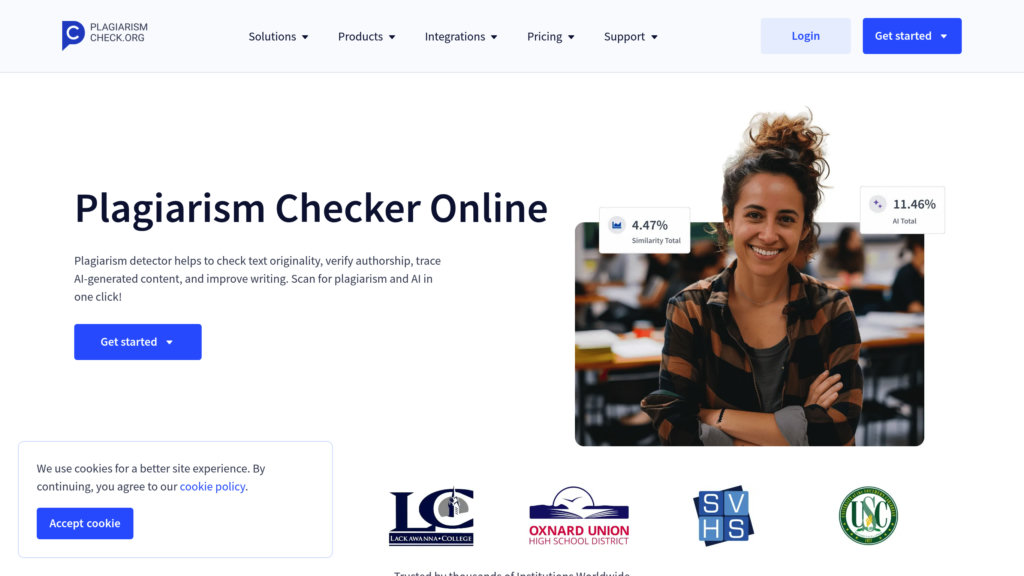PlagiarismCheck.org
Plagiarism Checker - Detect Copied and AI-Generated Content
Introduction
PlagiarismCheck.org serves as a sophisticated digital solution for identifying copied content, examining AI-generated material, and authenticating writing ownership. It leverages cutting-edge algorithms to cross-reference submitted documents with comprehensive databases encompassing academic publications and exclusive collections. Supporting numerous file types and multilingual content, the platform generates exhaustive similarity assessments complete with origin sources and AI detection metrics to promote authentic writing practices.
Key Features
Advanced Plagiarism Identification: Employs intelligent algorithms to uncover direct duplication, rewritten content, sentence-level modifications, and concealed text matches across diverse digital and physical sources.
AI-Generated Text Detection: Recognizes indicators of machine-produced writing with precision, enabling clear distinction between human-authored and AI-created content.
Writing Ownership Authentication: Uses proprietary Fingerprint technology to examine stylistic patterns and validate genuine authorship, effectively addressing ghostwriting concerns.
Multi-Language and Format Compatibility: Accommodates popular document formats including DOC, DOCX, PDF, TXT, RTF, and ODT while analyzing content in 15+ languages.
In-Depth Analysis Reports: Delivers comprehensive similarity evaluations featuring source references, match percentages, and comparative viewing options for straightforward verification and reference adjustments.
Learning Management System Connectivity & Data Protection: Integrates smoothly with educational platforms like Canvas, Moodle, and Google Classroom while maintaining strict data security protocols.
Use Cases
Academic Standards Maintenance: Educational establishments can examine student assignments for authenticity, AI participation, and citation accuracy to preserve educational quality.
Content Originality Verification: Authors and publishing professionals can validate material uniqueness and human authorship prior to distribution.
Authorship Confirmation: Businesses can authenticate document creators and prevent unauthorized ghostwriting or ownership conflicts.
Scholarly Work Preparation: Academics and journal editors can review research papers for originality and appropriate referencing before journal submission.
